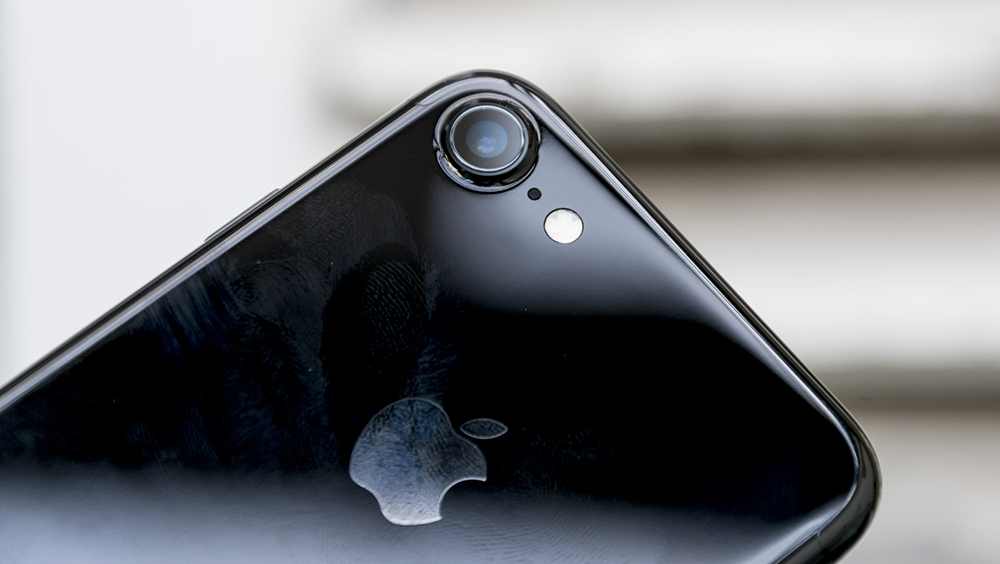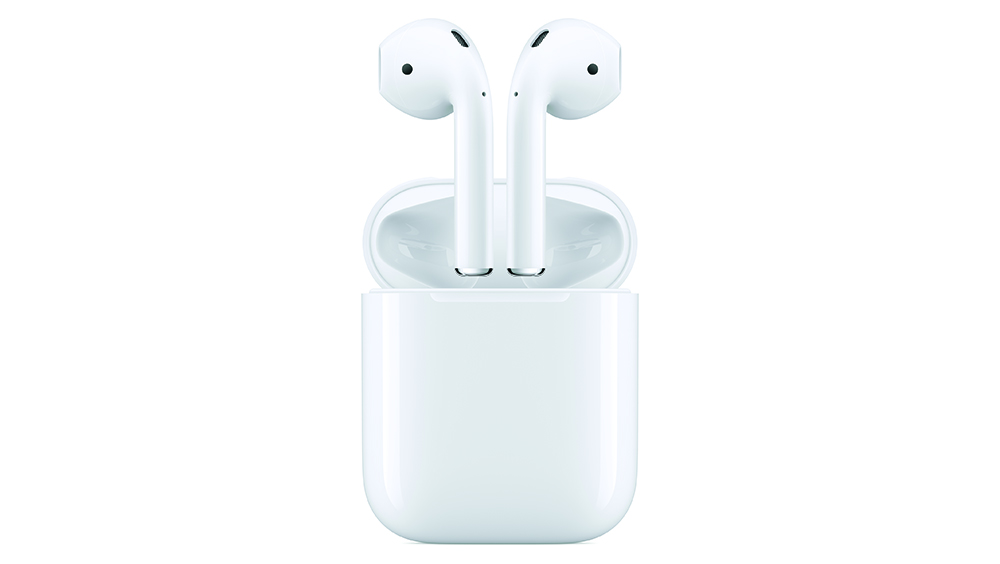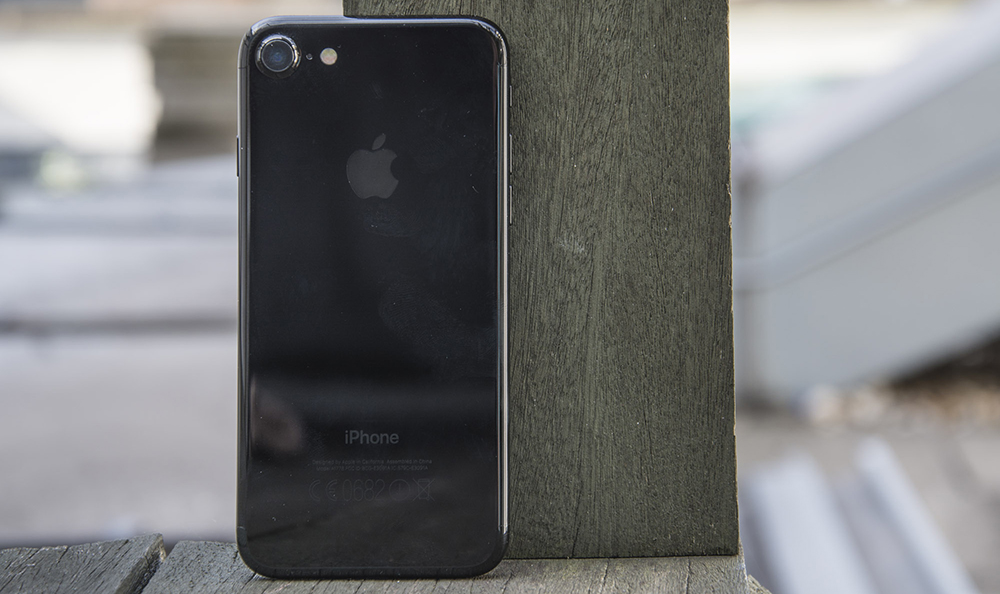iPhone 7 review
Apple's previous generation smartphone continues to be a best-seller


Apple's latest iPhone hits all the familiar notes you'd expect it to, and while it's still an amazing device, there's nothing here that we haven't seen before. If you're due for an upgrade, you're unlikely to be disappointed, but don't rush out to buy one.
-
+
One of the fastest phones we've ever tested; Excellent camera; iOS 10 has huge potential;
-
-
Jet black option feels tacky; No headphone port; No real advancements or innovations

Despite the highly anticipated launch of both the iPhone X and iPhone 8, last year's flagship iPhone continues to be a highly sought after device among Apple customers.
Apple's iPhone 7 was the world's best-selling phone in the third quarter of 2017 with around 13 million shipped units, according to Canalys, almost double that of the second most popular device, the iPhone 6s. Sales of the iPhone 8 have been muted somewhat by the launch of so many new Apple products in one season, and despite its positive reception, we're unlikely to see the same numbers still achieved by its predecessor.
But what makes the iPhone 7 such a big hit with smartphone buyers? We took a look to find out.
Headphone jack
The most widely talked-about news before the iPhone 7's launch was that Apple had ditched the iPhone's 3.5mm headphone jack. This prompted a fair amount of debate, with many grieving the loss of a port to plug into. This would be the beginning of a conscious effort to move away from legacy ports in favour of the Lightning connector that we see today. While encouraging users onto Apple's own compatible products makes sense from a business perspective, the direction is ultimately a loss for consumer choice.
Apple understands that its customers may be reluctant to change however, and has even thrown in a Lightning-to-3.5mm adaptor with the smartphone, if you just can't bear to part with your old cans.
The tech giant has also released a set of 'AirPods'; wireless earphones that look like regular Apple headphones with the cables missing. Not only are they absurdly expensive (surprise, surprise) but there's no connecting wire between the left and right earbuds, so if one falls out while you're out and about, you can kiss goodbye to half of your 159 investment. They're also less secure than other earbuds with locking wings or rubber tips, meaning they are more likely to fall out in the first place.

Home button
The home button has also been redesigned. It's no longer a physical button, but instead features Apple's own take on haptic feedback known as the 'Taptic' feedback engine, present in many of its other products. The Taptic engine provides varying levels of force feedback, using vibrations to mimic the feel of pressing a physical button. The sensation is a little odd at first, but you quickly get used to it, and the removal of one of the iPhone's few moving parts means there are fewer bits that can go wrong.
Waterproofing
Safety has been improved in other areas, too. Apple has finally followed the lead of rivals like Samsung and Sony, and has given the iPhone 7 proper waterproofing. The device is IP67-rated, meaning it can survive immersion in up to 1m of water for up to half an hour. This has been one of the most heavily-requested iPhone features, and will hopefully save many an iPhone from an untimely toilet-based demise.
Design, display and casing
The iPhone 7 and its predecessor share many features. It has the same dimensions as the iPhone 6s, apart from the antenna bands being repositioned to the top and bottom edges of the chassis, although this isn't a major difference.
The screen also remains basically the same. Apple's changed the colour calibration used by the iPhone's display but the size and resolution remain the same. It measures 4.7in and 1,334 x 750 respectively. This small change impacts the device greatly as the colours are brighter and more vivid, with Apple claiming it's 25% brighter than the 6s, while it displays deeper blacks.
Black is back as a colour choice too on the iPhone 7, which many fans have been waiting for eagerly. To please them, Apple has gone the extra length and offered the device in both basic black and in a shiny, slightly darker black. Fans can choose the new "Jet Black" option, which is glossy and sleek, or the regular black option, which has a pleasant matte finish.

Our personal choice is the latter, as the Jet Black version appears a little cheap and plasticky even though it's made of the same aluminium as every other model. Fingerprints will appear almost instantly on it too, and it also feels exceedingly slippery, which will worry many users considering how expensive the device is.
If black isn't your thing, you can opt for the classic Silver - which has always looked good on Apple products - a flashy Gold finish, or Rose Gold, which appears to be livid pink in promo shots but in reality is fairly muted.
This is also the first Apple smartphone to include stereo speakers, which produce a surprisingly good amount of volume. The tone is good, offering pleasingly chunky midranges, but the bass can't compete with Android rivals such as the HTC Ten and its BoomSound speakers.
Specs and performance
Apple's handsets have long since gone past the point where they're likely to be overly taxed in day-to-day use, and the iPhone 7 is no different. Speed and responsiveness are noticeably better than in the iPhone 6s though, and the iPhone 7 copes superbly with multi-tasking, regardless of how many high-performance apps you throw at it.
This is down to the iPhone 7's A10 Fusion processor, which is predictably beefy in terms of horsepower. However, while it's great at handling demanding tasks like 3D gaming and video streaming, it's also got an extra two cores to provide increased efficiency when dealing with the numerous smaller jobs that make up everyday use, like checking emails, listening to music and browsing social media.
In theory, this means increased battery life, and the iPhone 7 did indeed perform better than its predecessor, racking up a final score of 13hrs 2mins in our battery benchmarks. However, it falls short of the Samsung Galaxy S7, which has it beat by five and a half hours.
Read on to find out about iOS 10, the camera, and our verdict on the iPhone 7
Get the ITPro daily newsletter
Sign up today and you will receive a free copy of our Future Focus 2025 report - the leading guidance on AI, cybersecurity and other IT challenges as per 700+ senior executives
Dale Walker is a contributor specializing in cybersecurity, data protection, and IT regulations. He was the former managing editor at ITPro, as well as its sibling sites CloudPro and ChannelPro. He spent a number of years reporting for ITPro from numerous domestic and international events, including IBM, Red Hat, Google, and has been a regular reporter for Microsoft's various yearly showcases, including Ignite.
-
 Westcon-Comstor and Vectra AI launch brace of new channel initiatives
Westcon-Comstor and Vectra AI launch brace of new channel initiativesNews Westcon-Comstor and Vectra AI have announced the launch of two new channel growth initiatives focused on the managed security service provider (MSSP) space and AWS Marketplace.
By Daniel Todd Published
-
 Third time lucky? Microsoft finally begins roll-out of controversial Recall feature
Third time lucky? Microsoft finally begins roll-out of controversial Recall featureNews The Windows Recall feature has been plagued by setbacks and backlash from security professionals
By Emma Woollacott Published
-
 The UK government wants quantum technology out of the lab and in the hands of enterprises
The UK government wants quantum technology out of the lab and in the hands of enterprisesNews The UK government has unveiled plans to invest £121 million in quantum computing projects in an effort to drive real-world applications and adoption rates.
By Emma Woollacott Published